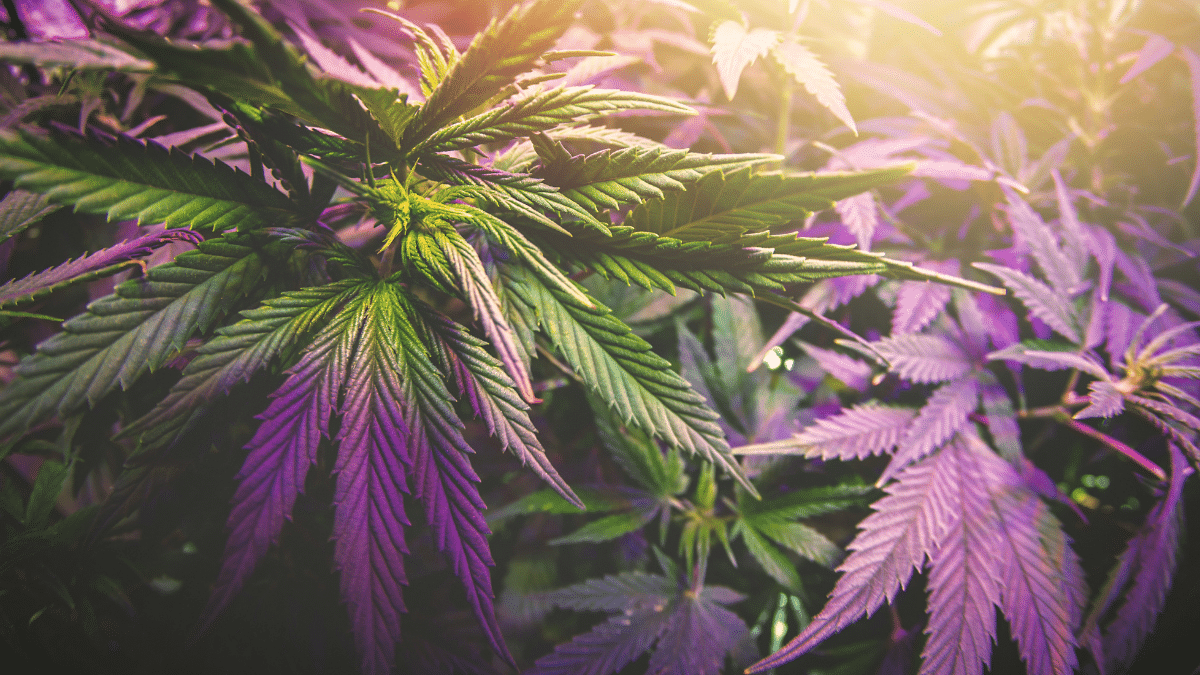Have you ever heard of ducksfoot cannabis? Or maybe the whorled phyllotaxy? The cannabis plant that we know, and love has a few interesting mutations.
How do Cannabis mutations happen?
Cannabis mutations happen when a plant’s DNA is altered. All the genetic information needed to make a plant, what it is, can be found in its DNA. Specifically, there are two types of DNA mutations, chromosome mutations, and gene mutations.

Chromosome mutations can take different forms including the order of the genes on the chromosome can be altered, genes can be doubled or deleted, and genes can break off. Gene mutations is based on when the order on a strand of DNA is changed.
Both the gene and the chromosome mutations occur naturally and at a low frequency. Higher rates of mutation can occur when the DNA is damaged by a mutagenic agent, however, these are often detrimental to plants. Having said that, desirable traits sometimes come forth through random mutations.
Here is a list of the most common and interesting cannabis mutations.
Ducksfoot Cannabis
These particular cannabis mutations come from Australia, and it took its name from its webbed and foot-like leaves. In fact, it is sometimes also known as Webbed Leaves. The odd variety was cultivated into a real strain, but it can also occur across various strains. Most ducksfoot cannabis can grow into sativa plants.
It looks very different to your typical cannabis plant which makes it the perfect mutation to grow in jurisdictions in which growing is still frowned upon. If the temperature is cold enough, this plant will also produce incredible purple buds.
Whorled Phyllotaxy
Regular cannabis plants have two leaves that grow from each internode. What’s different with the whorled phyllotaxy is that it has three leaves instead of two. These plants tend to be extra bushy and it can lead to greater yields. However, once bred or replicated, it can easily disappear which might make it difficult for breeders.
Variegation
Sometimes known as albinism, this is one of the most stunning cannabis mutations around. This mutation comes about when the plant is unable to produce chlorophyll and it can be seen on leaves, buds, or make the entire plant turn white.
Variegation also brings about lower yields and slower-growing plants. However, eventually, variegated plants can grow up to be quite tall and mighty.
The Creeper

A strange mutation is found in tropical strains that can grow large in humid situations. However, rather than trying to reach the top, some of these strains grow large on the lower branches so that they can reach the ground. The plant may then form new root sites on the ground.
Australian Bastard Cannabis (ABC)
An Aussie invention from the start which was first discovered in the 70s near Sydney. The mutation grows more like a herb than a bush. Its leaves are shiny and smooth and do not grow more than 5cm in length.
The original ABC was low in cannabinoids, but breeders have managed to boost its THC levels.
Vine-like Cannabis
No one is sure whether the vine-like cannabis is a true breed or simply an extension of ABC. ABC crosses can produce vine-like mutations in the plant, and it also includes the ability to form stems that wrap around each other.
This mutation is harder to find, and it may only exist due to intentional breeding to trigger this vine-like effect in plants.
Leaf Buds
This mutation causes the buds to form at the base of the leaves. Leaf buds are sometimes also called the piggyback mutation. Leaf buds are interesting in appearance. However, it might be worthwhile, in the long run, to remove them since they might take up nutrients from your main flower sites.
Stringy Cannabis
Here the calyxes will grow all along the branch rather than in clusters. This stringy mutation is most common in Southeast Asia or South America. They might take a long time to flower, and they will have a high ratio of hermaphroditism. However, what sets them apart is their unique appearance and aroma.
Polyploids
They possess double the number of chromosomes than the original. These can either be developed spontaneously or they can be intentionally bred into the plants. It can also be induced in plants with a chemical called colchicine.
Twin Seedlings
We are finishing off our list with a very common mutation. If the process is carefully handled, three seedlings can be separated into two plants. One of these plants will be a typical offspring of both mother and father while the second plant will be its mother’s clone.

Conclusion
We hope you enjoyed getting to know all about cannabis mutations! If you encounter any other cannabis mutations, be sure to let us know!
Keep checking out our blog for more tips and updates on cannabis in Malta!

